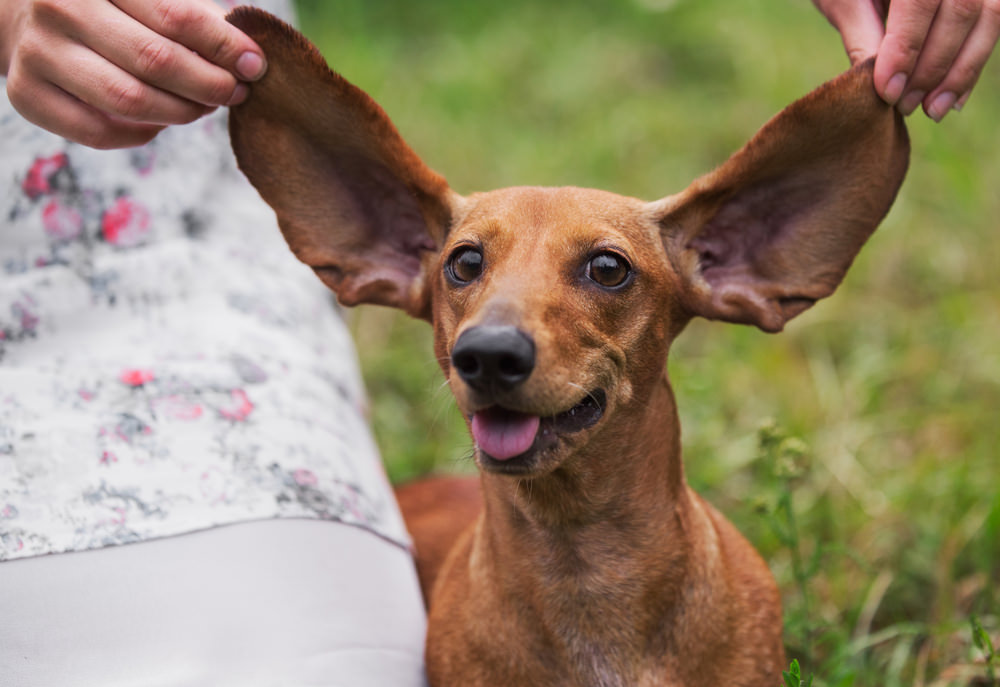Short, pointy, floppy, and folded, our fuzzy friends have ears that are quite different from our own. Not only do their ear shapes differ, so do their uses and abilities. You see them every day–and chances are, you give ’em a good scratch–but here are a few fun facts that you may not have known about your pup’s furry appendages.
1. Dogs have around 18 muscles in each ear.
The exact number depends on the breed. This is why they’re able to rotate, tilt, raise or lower their ears, says the Healthy Pets website via Mercola. They can also move each ear independently.

2. They can hear about 4 times better than humans.
Since dogs have such sensitive ears, they can always hear something. The Bark explains that they can hear electronic frequencies that are imperceptible to humans, and even the “bodily vibrations of termites in the walls.” Yuck!
3. When a dog tilts their head, it may have to do with their hearing.
While not fully understood, it’s theorized that dogs may tilt their heads to hear better or pinpoint where a sound is coming from, says Kristina Lotz for iHeartDogs.

4. Dog ears are not only used for hearing–they’re key elements of body language.
According to WebMD for pets:
- Naturally held ears indicates being relaxed and comfortable
- Raising ears shows alertness (and they’re usually directed toward source of interest)
- Up and forward ears can indicate aggression
- Pulled back ears are a sign of friendliness
- Ears flattened to head show submission or fear
5. Dog’s ear canals are shaped like an “L.”
This is part of the reason that they can be prone to ear infections an other issues. The shape by its nature stops dirt, debris, and sometimes bacteria and yeast before it reaches the eardrum. But it also means that sometimes those nasty irritants get trapped inside your pup’s ears without regular ear cleanings. It is generally recommended to clean your dog’s ears with ear wipes or an ear rinse at least once a week, or after each time they go swimming.

6. Puppies are born deaf.
Healthy Pets explains that their ear canals are closed for the first couple weeks.
7. There are about a dozen different dog ear shapes.
You knew that different dogs have different shaped ears, but did you know there were so many? Psychology Today has a great illustrated chart. Some shapes include:
- Pricked ears, like on Malamutes or German Shepherds
- Blunt or round ears, like on French Bulldogs
- Bat ears, like on Corgis
- Drop or pendant ears, like on Basset Hounds
- Cocked or semi-pricked ears like on Collies or Shetland Sheepdogs
- Rose ears, like on Greyhounds

8. Ear Infections Are The Top Reason That Dog Owners Visit a Veterinarian
Sadly, our pups get A LOT of ear infections. According to Nationwide Pet Insurance, ear infections were the top reason people visited a veterinarian in 2016. This painful condition could be alleviated if dog owners were more consistent about caring for their dog’s ears, such as frequent inspections, and weekly cleanings with an canine ear rinse or ear wipes.
Make Sure to Take Care of Your Pup’s Ear on a Weekly Basis!
Learn more about Project Paws® Canine Ear Cleaning Products, the only ear cleaners for dogs that gives back to animal shelters!
These statements have not been evaluated by the Food and Drug Administration. This product is not intended to diagnose, treat, cure, or prevent any disease. The information on this website is not intended to replace a one-on-one relationship with a qualified health care professional.

